|
|||
|
There are plenty of yester airlines you could fly on your way to Yesterland—including Western Airlines, Pacific Southwest Airlines (PSA), and Bonanza Airlines. But once you get to Yesterland, only Trans World Airlines—TWA—can take you to the Moon. Well, in reality, only TWA can provide a simulation of it. |
|||
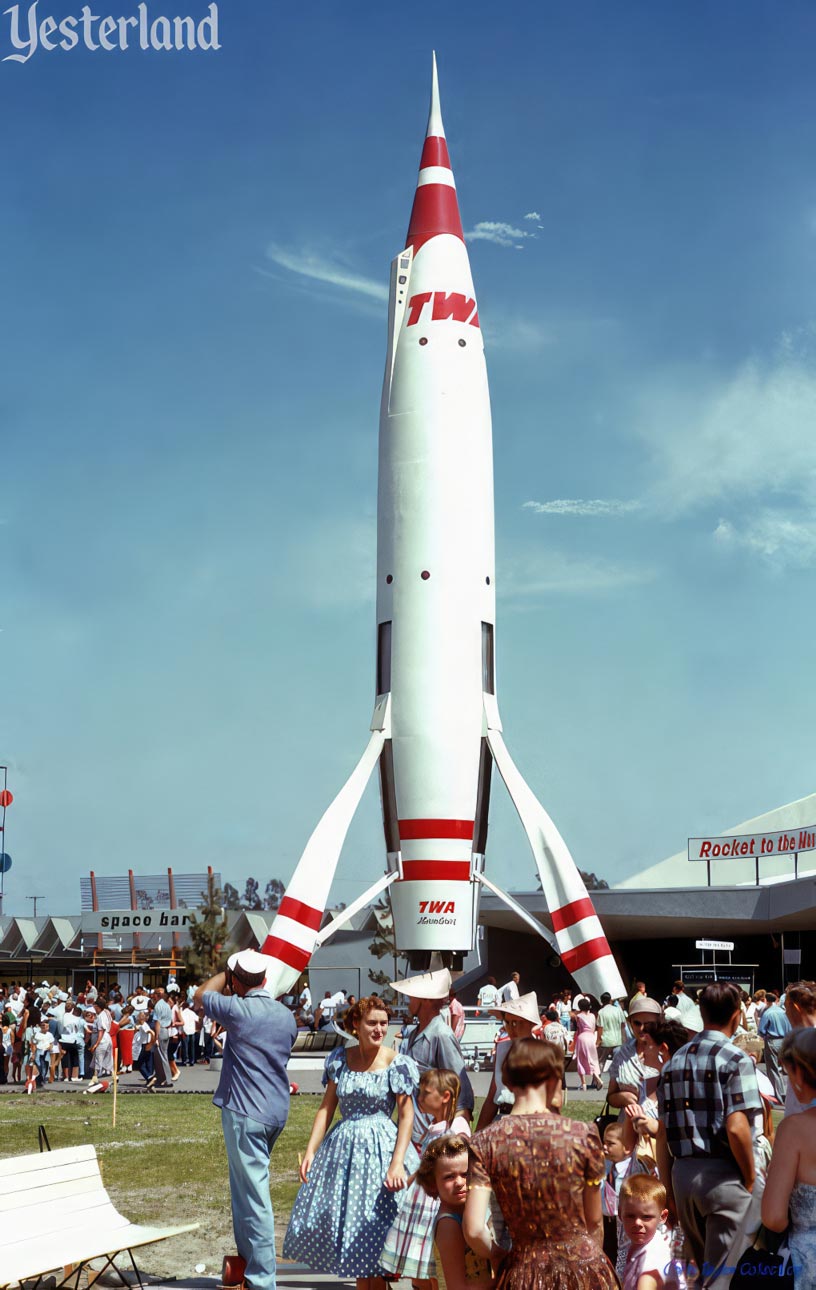
Photo by Charles R. Lympany, courtesy of Chris Taylor Ready for liftoff |
|||
|
The TWA Moonliner is the tallest point in Yesterland—at least if you visit before the construction of 147-foot Matterhorn Mountain. Standing on its three legs, the tip of the 72-foot rocket is 80 feet above the ground, so it’s taller than 77-foot Sleeping Beauty Castle. You can even see the Moonliner from the freeway. |
|||
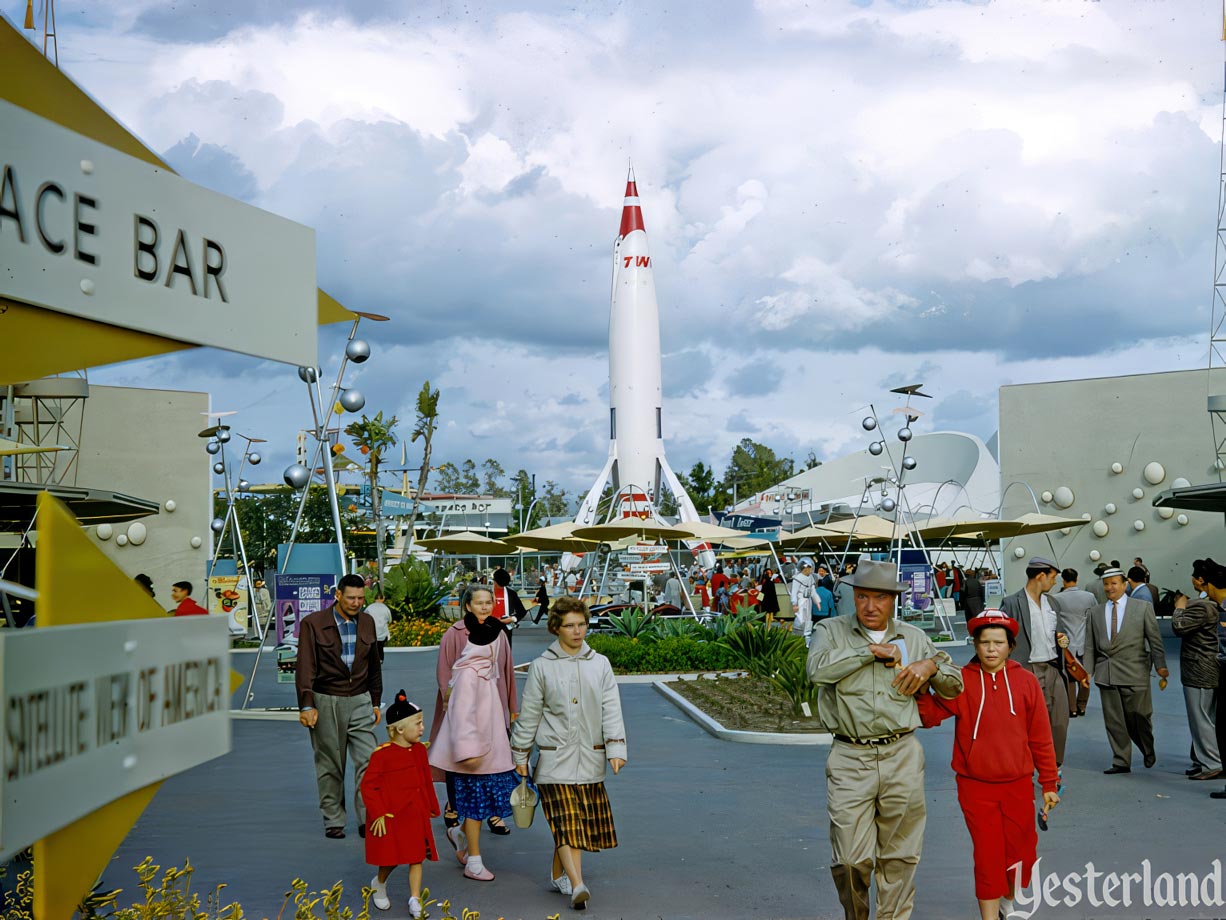
Photo by Robert Breneman, 1958, courtesy of David Breneman The focal point of Tomorrowland |
|||
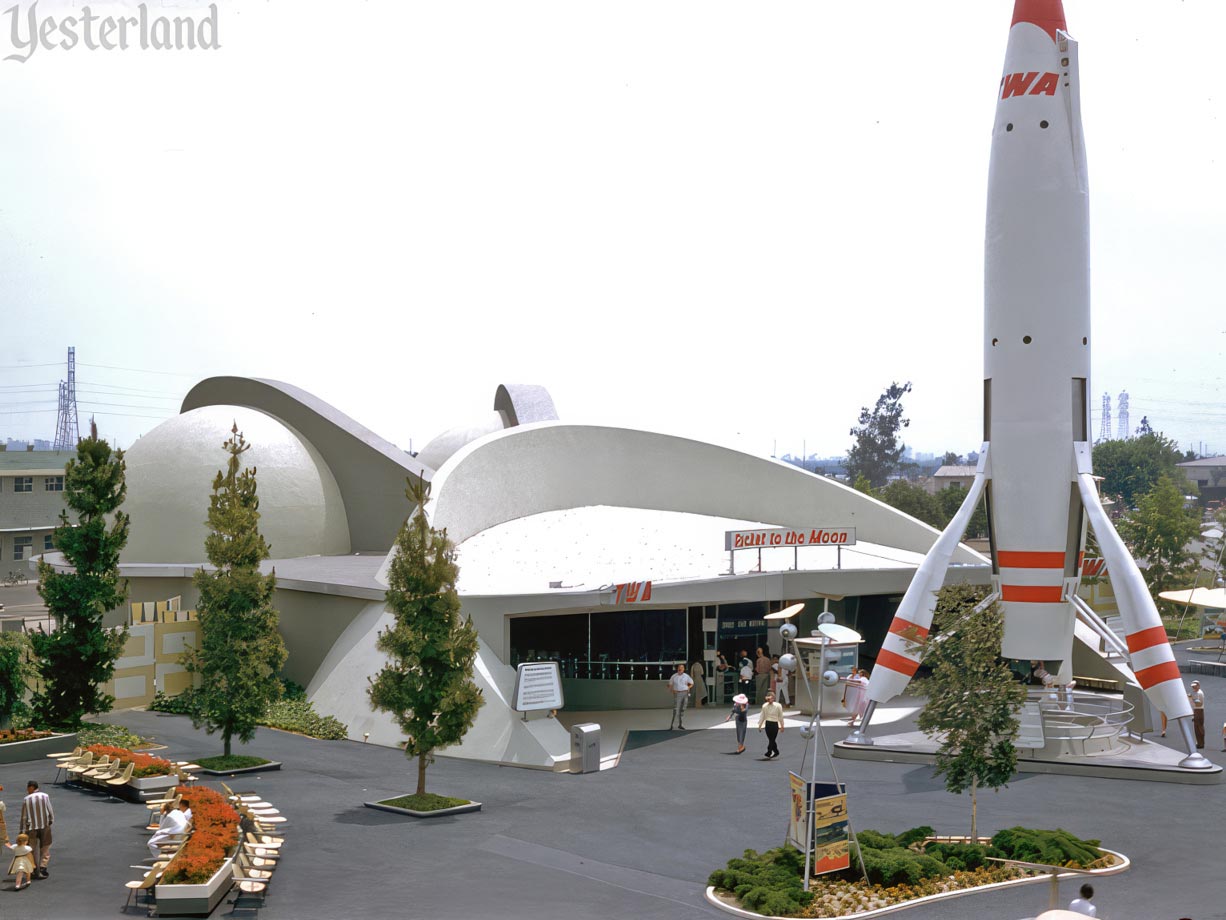
Photo by Merrill Garner, 1958, courtesy of M. Scott Garner Graceful arches and domes |
|||
|
Tomorrowland represents the future—the world of 1986, around 30 years from the present. By then, TWA expects to provide passenger service to the Moon at speeds exceeding 172 thousand miles an hour. In 1986, the trip will take eight hours. TWA’s Rocket to the Moon gives you a preview of that experience, “in ten thrilling minutes—all without ever leaving the ground.” The Moonliner is big, but a real Moonliner in 1986 will be even larger. A sign at the base of the Moonliner explains its scale: THIS 80-FOOT PYLON is a ⅓ scale model of a rocket ship of the future. The full-scale ship would be 240 feet in length and designed to use nuclear energy as fuel. Stabilized in flight by gyroscopes, it would be controlled by automatic pilots and magnetic tapes. Landing tail-first, no air-foils or wings would be necessary, its vertical descent controlled by its jets. The 3 retractable landing legs would be equipped with shock absorbers. The light color used on the outer surface is for maximum reflectivity of solar radiation and would probably be a baked enamel finish to resist excessive heat due to atmospheric friction. Liquid coolants would circulate through all window panels and cockpit enclosures. Launching and landing would be done over a “firing center” to confine and lead off the superheated exhaust gases. Although this attraction is sponsored by TWA, you still need to present a ticket as you enter the show building. |
|||
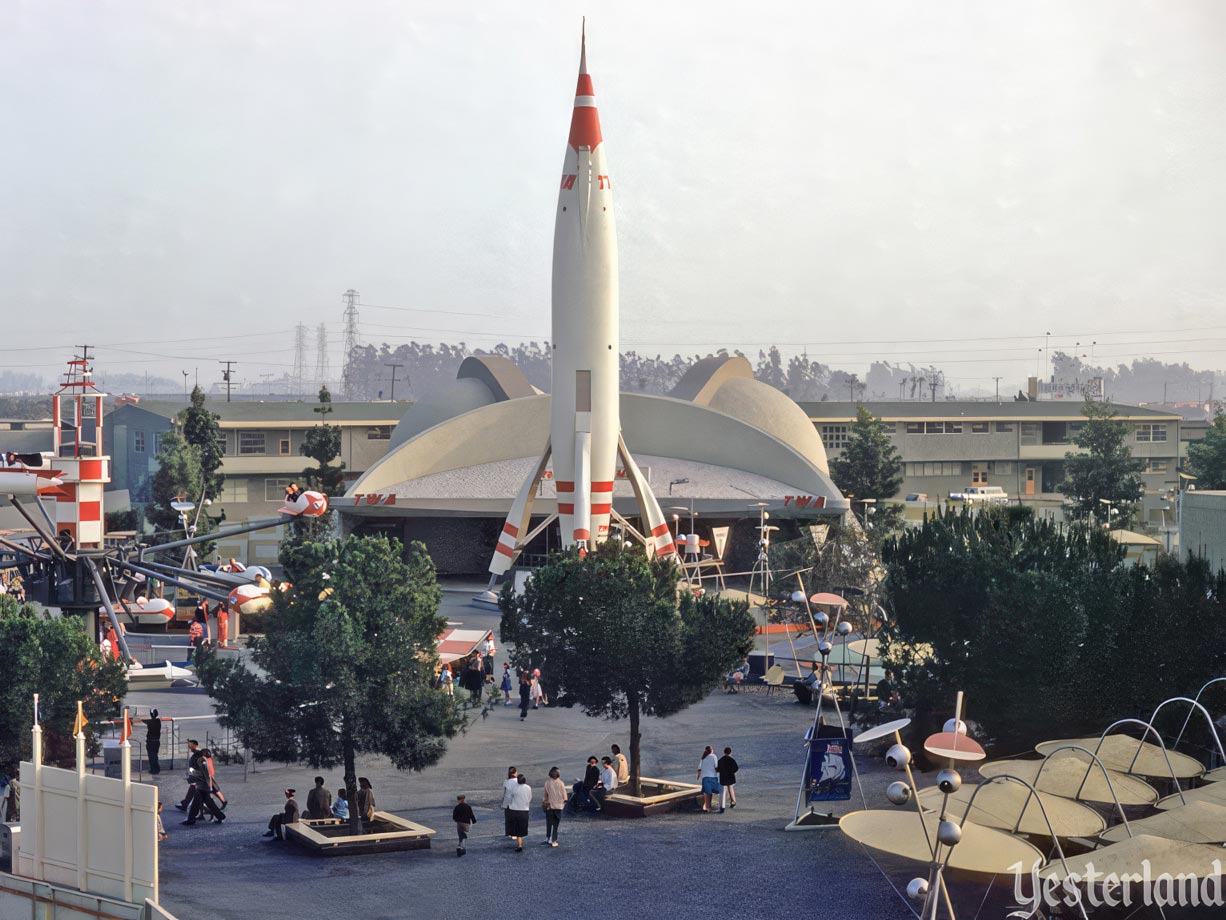
Photo by Charles R. Lympany, courtesy of Chris Taylor Twin domes of Rocket to the Moon, allowing frequent departures |
|||
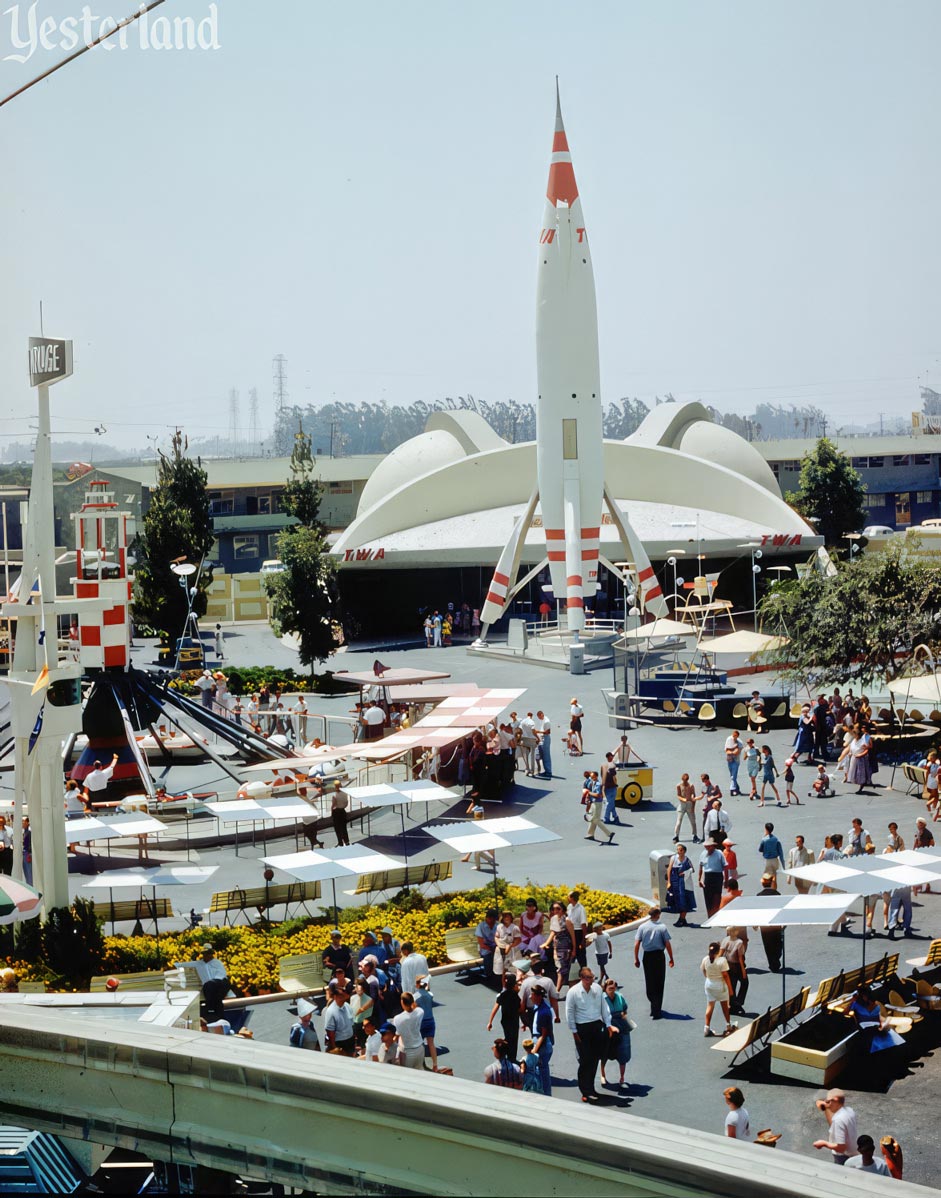
Photo by Fred Nelson, 1959 Rocket to the Moon from the Skyway |
|||
|
Your Rocket to the Moon simulation takes place in one of two identical dome-shaped “passenger chamber” theaters. Take a seat in one of the three tiered rows surrounding the screen in concentric circles. There’s a round projection screen in the center of the floor, another on the ceiling. The floor screen will show you where you’ve been, while the ceiling screen will show you where you’re going—almost as if they were windows. As you lift off, look at the floor screen. You’re high above the launch pad, then high above Anaheim, and soon high above the Earth. As you leave the Earth’s atmosphere, the blue sky changes to the blackness of outer space. The Moon grows larger on the ceiling screen as the Earth gets smaller on the floor screen. You don’t actually land on the Moon, but you get to fly around the back side of the Moon. Along the way, you learn interesting facts about the Moon and the planets. Soon you’re heading back to Earth. After your craft turns around, you see your destination on the floor screen. Prepare to land. |
|||
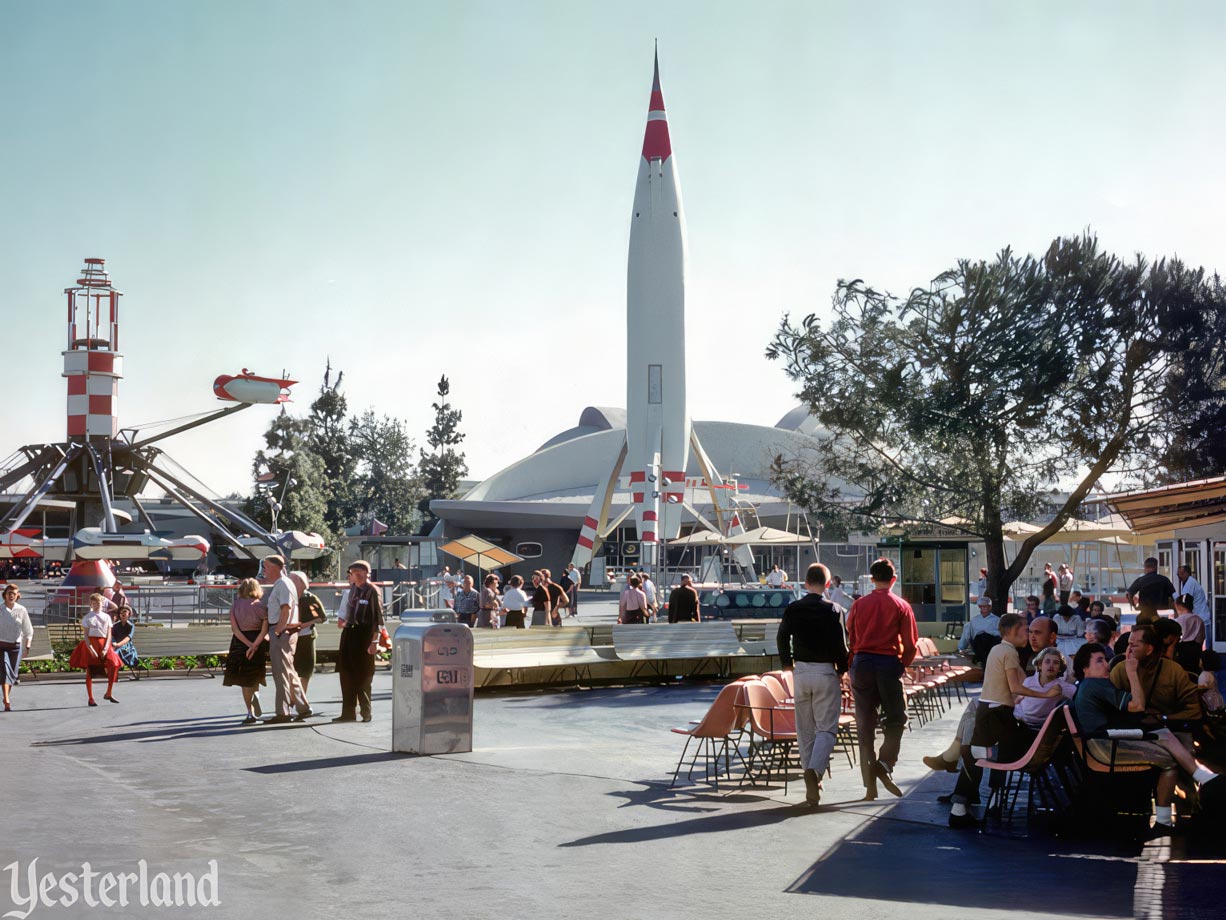
Photo by Charles R. Lympany, courtesy of Chris Taylor The future? |
|||
|
Although the ride is a simulation, the optimism about the future is real. |
|||
|
|
|||
|
Rocket to the Moon opened in Disneyland in 1955. The red-and-white TWA Moonliner was the icon for Tomorrowland. |
|||
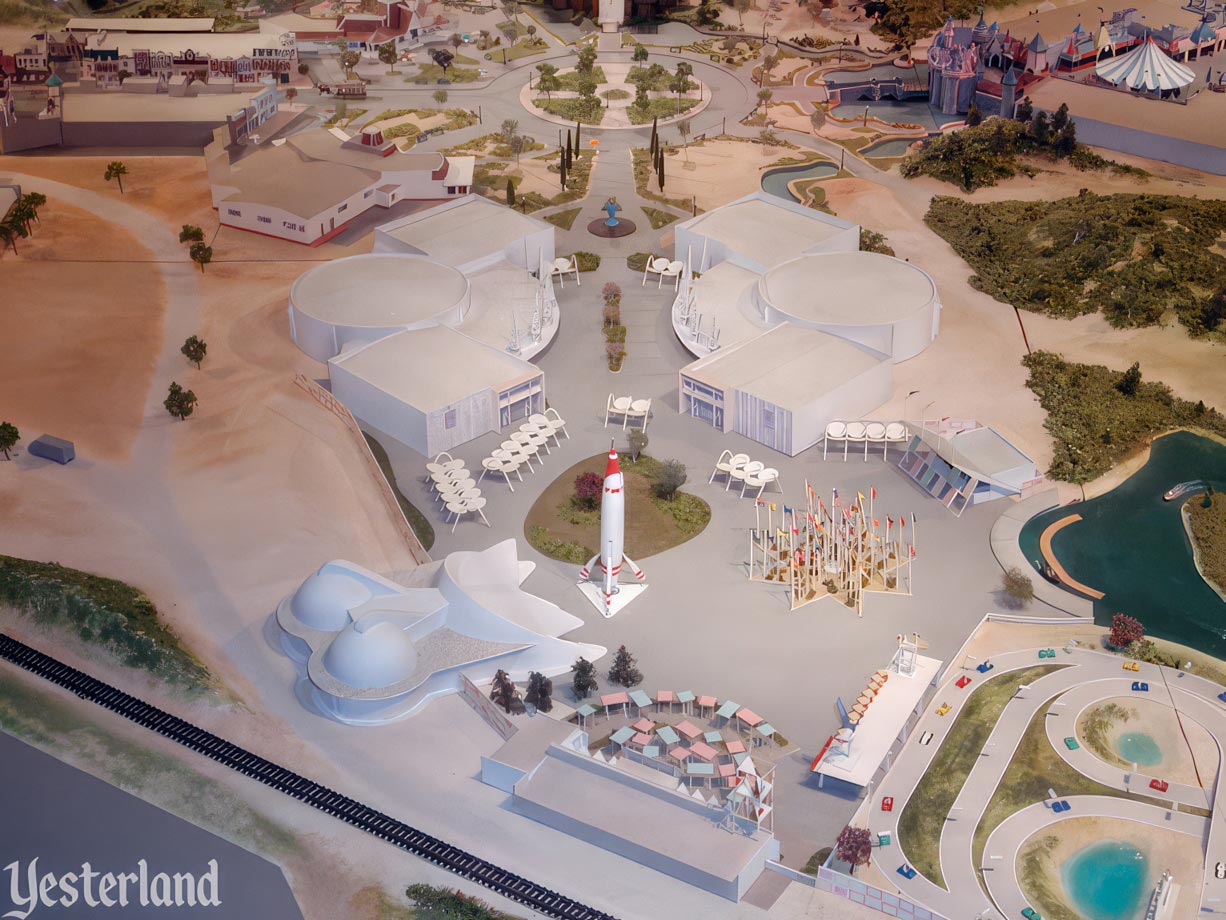
Photo by Werner Weiss, 2006 Moonliner in the 1955 model at Disneyland - The First 50 Magical Years |
|||
|
The Moonliner had looked futuristic in 1955—but by the late 1950s, it already looked like a relic of the past. NASA’s Project Mercury sent astronauts into orbit using straightforward, cylindrical Atlas rockets. The elegant Moonliner was like an elegant TWA Super Constellation propeller aircraft in the age of TWA Boeing 707 and Convair 880 jets. TWA dropped its sponsorship of Rocket to the Moon in 1961. There was no official reason. TWA would fly you across the Atlantic and the Pacific, but no longer to the Moon. Douglas Aircraft, the manufacturer of DC-8 jets, must still have liked the Moonliner. |
|||
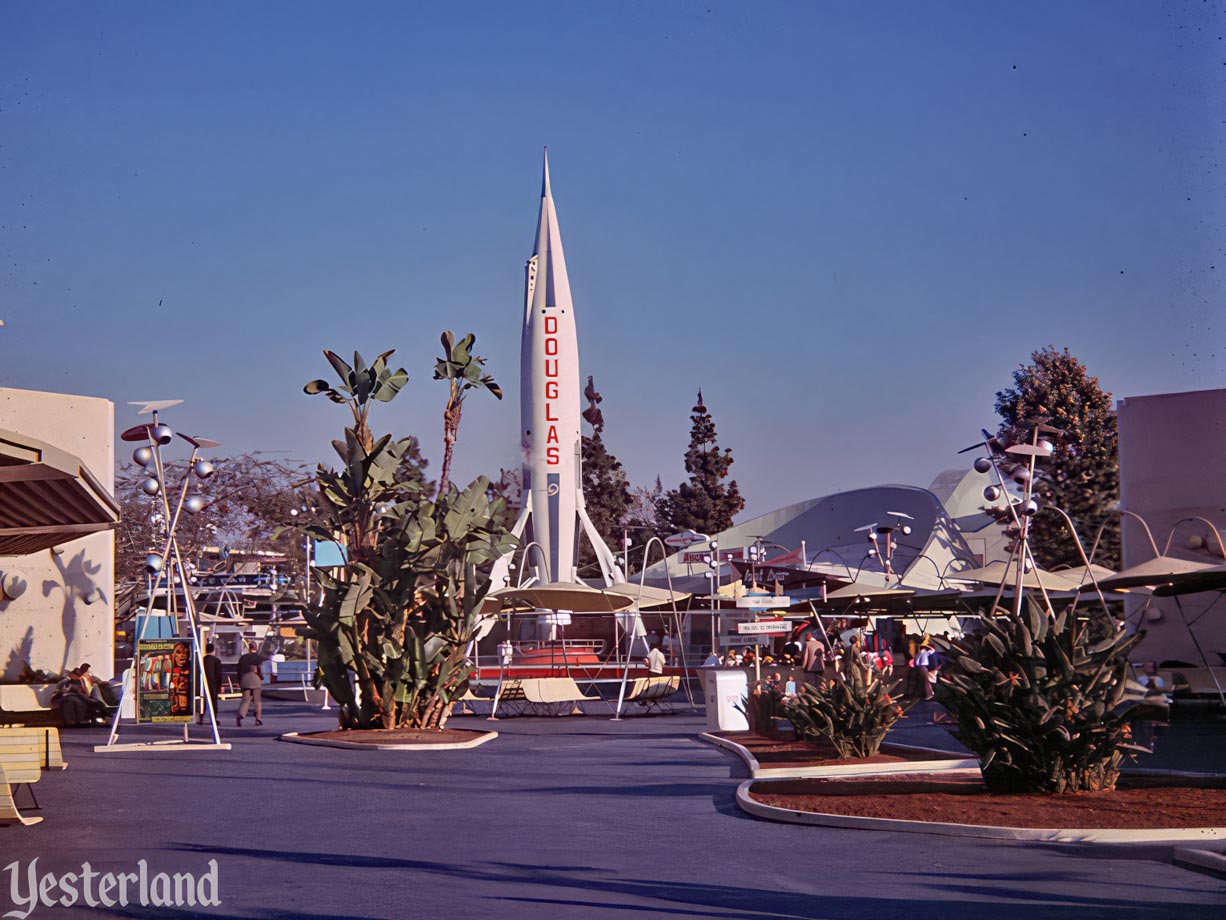
Photo by Ron Fleischer, 1964 Moonliner in Douglas Aircraft livery |
|||
|
Douglas Aircraft sponsored Rocket to the Moon from 1962 until 1966. The Moonliner stayed, but it sported a new, less elegant paint scheme. Blue vertical stripes down the rocket were interrupted by columns of large, red uppercase letters spelling DOUGLAS. |
|||
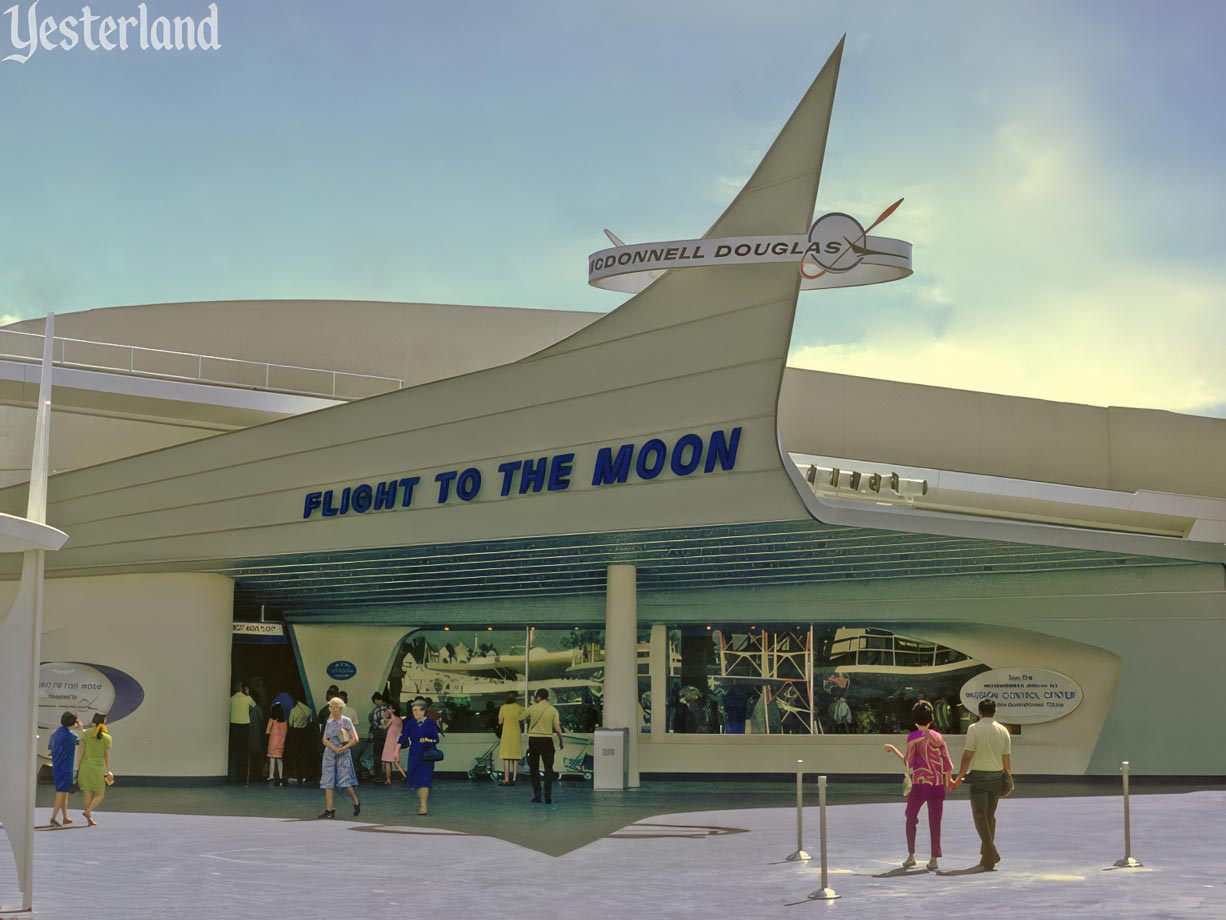
Photo by Charles R. Lympany, courtesy of Chris Taylor Flight to the Moon, replacement for Rocket to the Moon |
|||
|
Rocket to the Moon closed permanently September 5, 1966. The show building was demolished. For the New Tomorrowland of 1967, Disneyland built a new, larger show building—again with two round theaters, but larger in diameter and with a fourth concentric circle of seats in each. Flight to the Moon, presented by McDonnell Douglas, opened August 12, 1967. The new version added an Audio-Animatronics “Mission Control” pre-show and moving seats. The 1955-vintage Moonliner rocket was no longer anywhere to be seen. It had been scrapped. There was no replacement. From July 1969 through December 1972, six manned missions of NASA’s Apollo program landed on the Moon. Travelling to the Moon didn’t seem so futuristic anymore. Although these weren’t passenger flights, the present had caught up with Tomorrowland. Disneyland’s Flight to the Moon closed January 5, 1975, less than eight years after opening. Mission to Mars, an updated show using the same show building and Audio-Animatronics cast, lasted from March 21, 1975, to November 2, 1992. |
|||
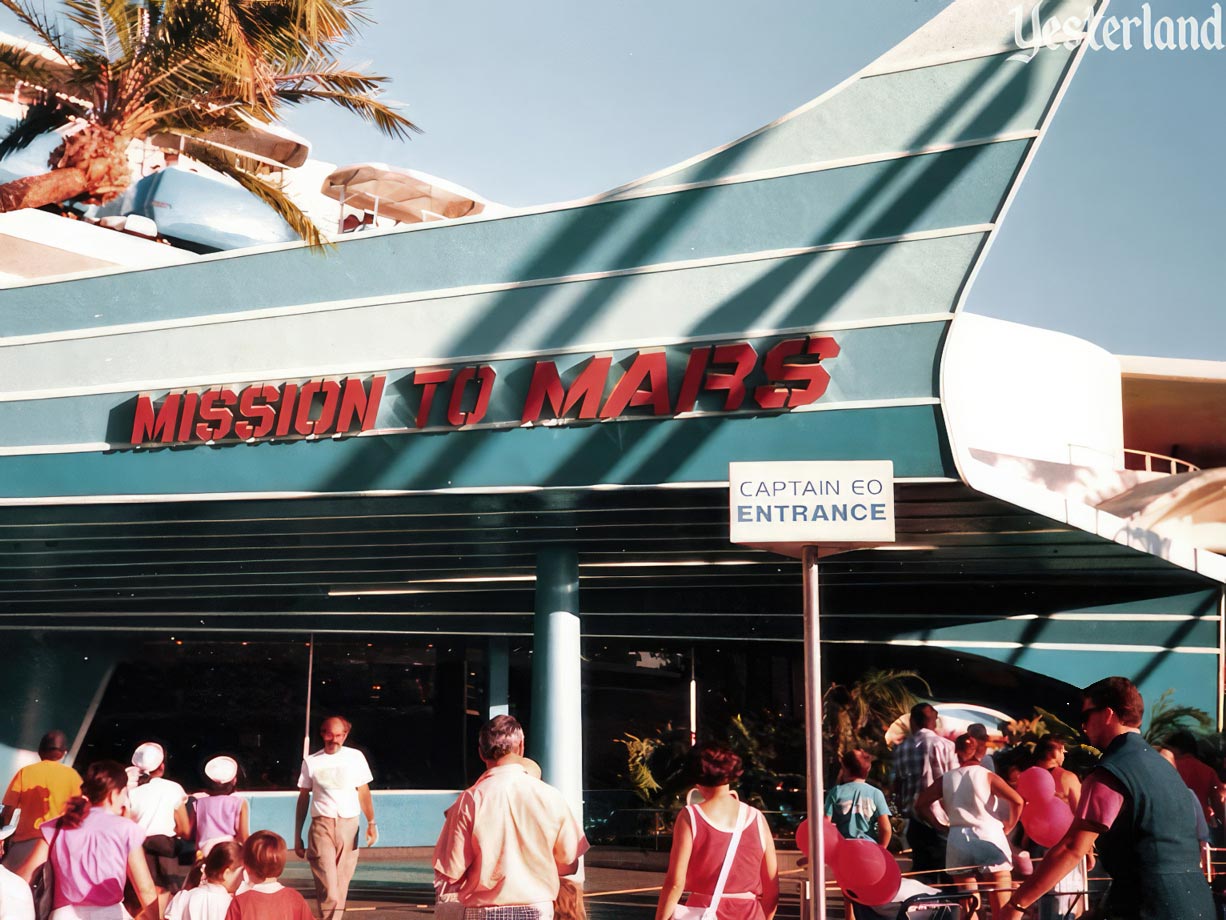
Photo by Chris Bales, 1991 Mission to Mars, an updated version of Flight to the Moon |
|||
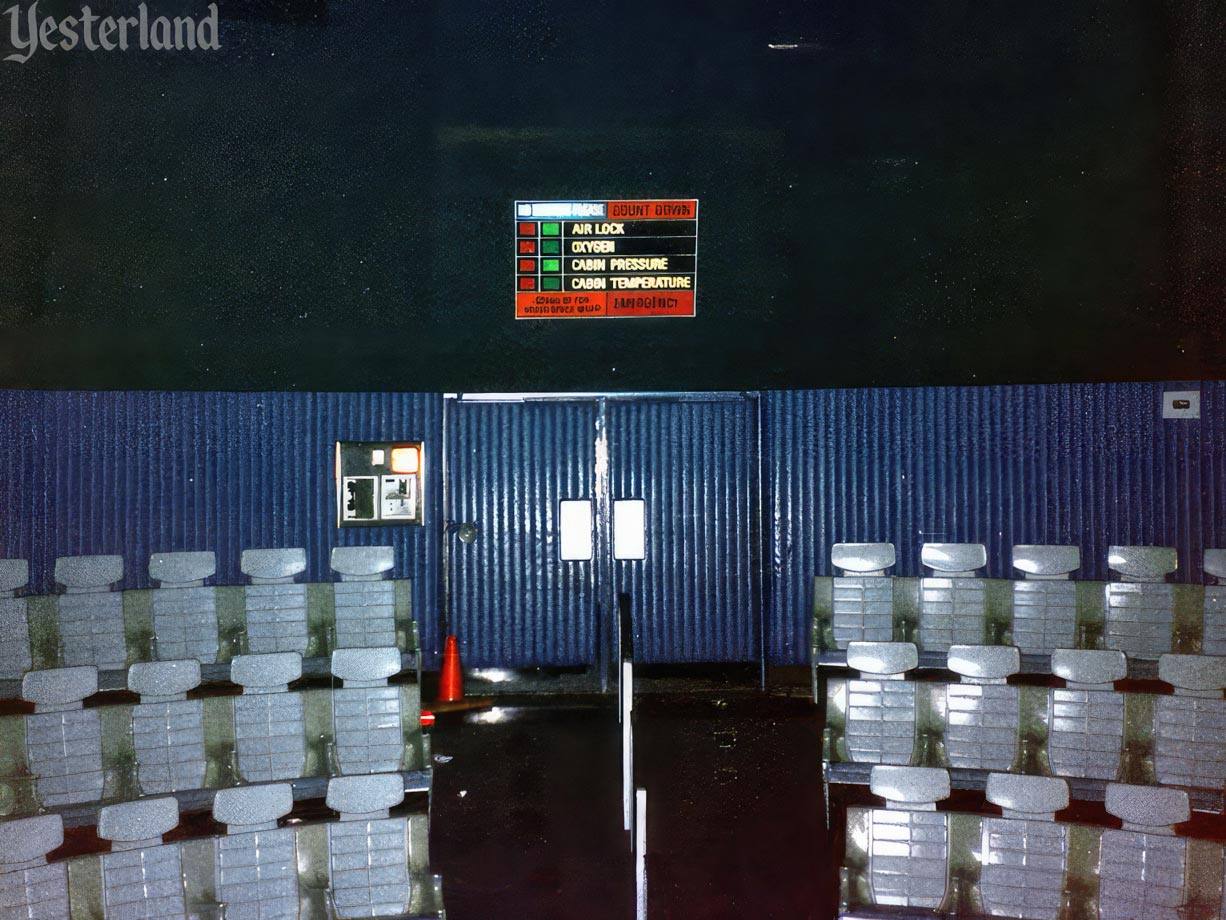
Photo by Chris Bales, 1995 Mission to Mars interior |
|||
|
Mission to Mars closed in November 1992. But this time, the closing wasn’t to make way for a major update or brand new attraction. Except for a short period in 1996, when part of the building was used for the temporary Toy Story Funhouse, the former Mission to Mars was simply shut. It was part of a sad corner of Disneyland with several other shuttered attractions that weren’t replaced until years later (or not replaced at all): America Sings (closed 1988), the Skyway to Fantasyland (closed 1994), and the PeopleMover (closed 1995). |
|||
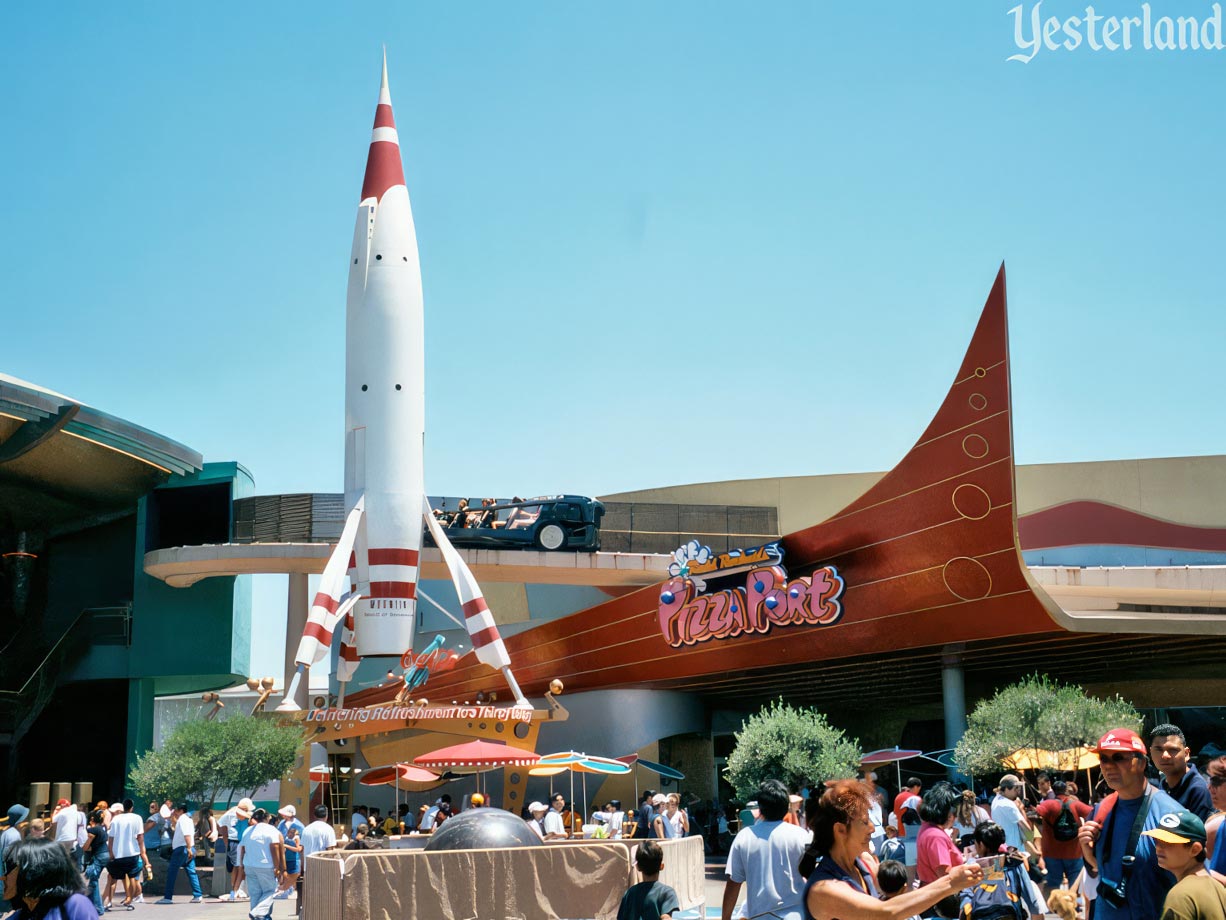
Photo by Werner Weiss, 2000 Redd Rockett’s Pizza Port, with the Rocket Rods ride behind it |
|||
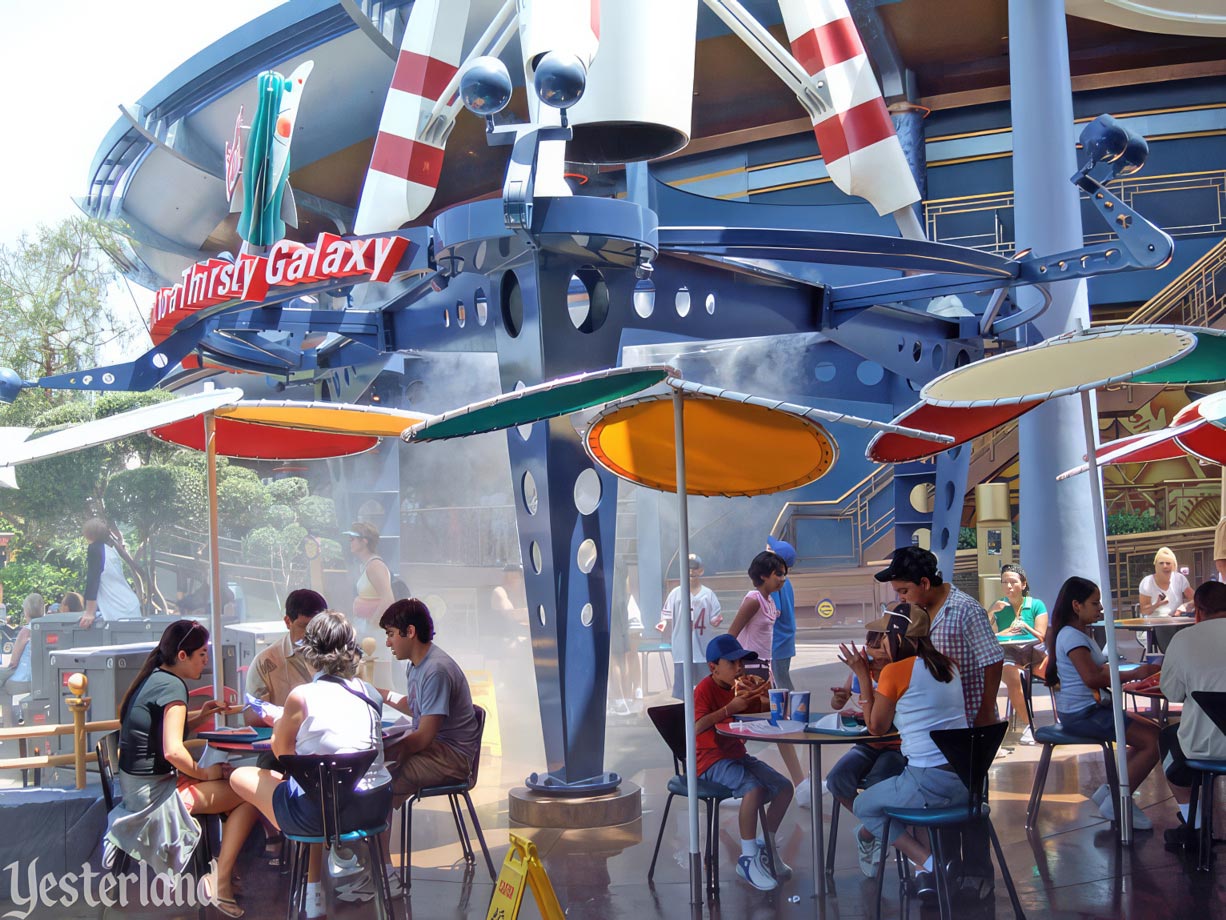
Photo by Allen Huffman, 2005 1998 Moonliner, “Delivering Refreshment to a Thirsty Galaxy.” |
|||
|
In 1998, the building was transformed into Redd Rockett’s Pizza Port restaurant, as part of the new New Tomorrowland project. A new Moonliner, approximately two thirds the height of the original, landed near the restaurant’s entrance. The 1998 Moonliner was red-and-white, just like the original—only with the red-and-white color scheme of Coca Cola, not the red-and-white color scheme of TWA. The sponsors of Rocket to the Moon are now yester-companies. American Airlines acquired the assets of Trans World Airlines (TWA) in 2001, marking the end of the once-mighty global carrier TWA. Aerospace manufacturer Douglas Aircraft Company merged with the McDonnell Aircraft in 1967 to form McDonnell Douglas (the sponsor of Flight to the Moon). When McDonnell Douglas merged with Boeing in 1997 to form The Boeing Company, it was the end of the Douglas name and the “DC” (Douglas Commercial) series of airliners. When Walt Disney World opened in 1971, Flight to the Moon was one of the original attractions of Magic Kingdom Park. As at Disneyland Park, it became Mission to Mars in 1975. |
|||
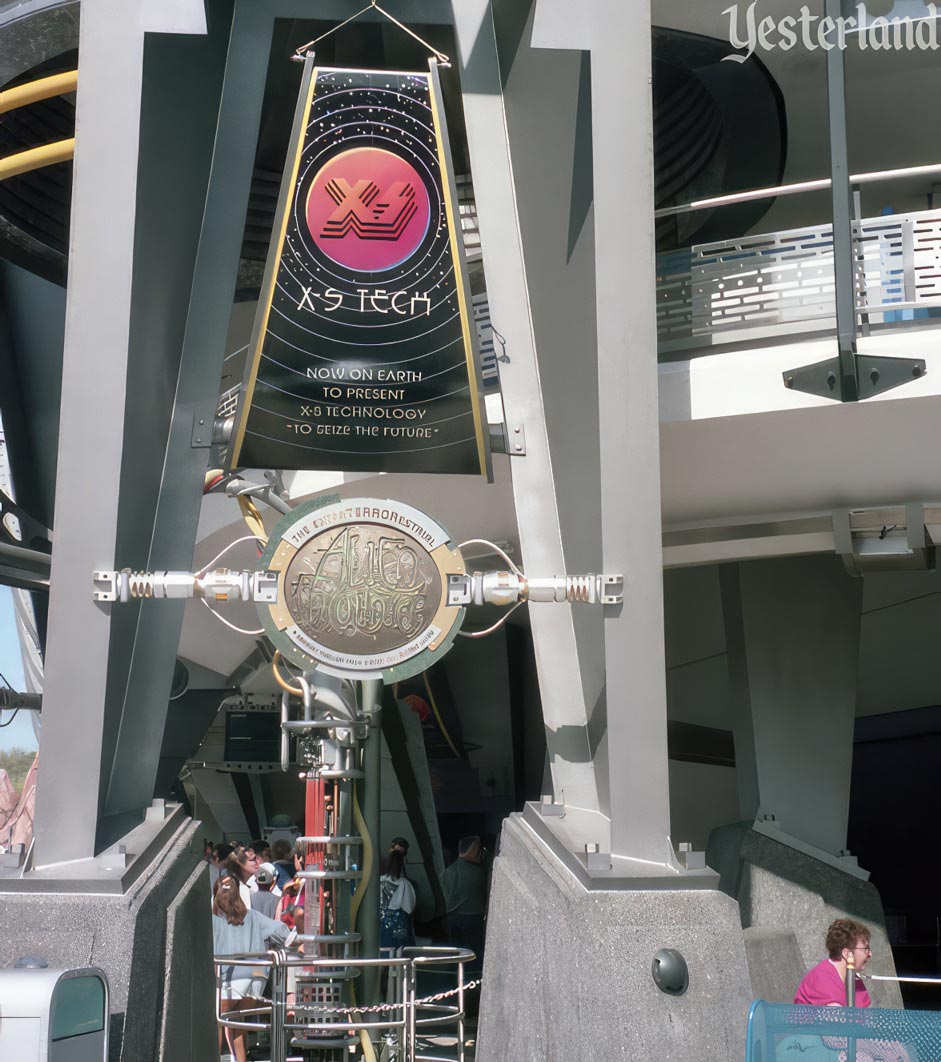
Photo by Chris Bales Alien Encounter at Magic Kingdom Park |
|||
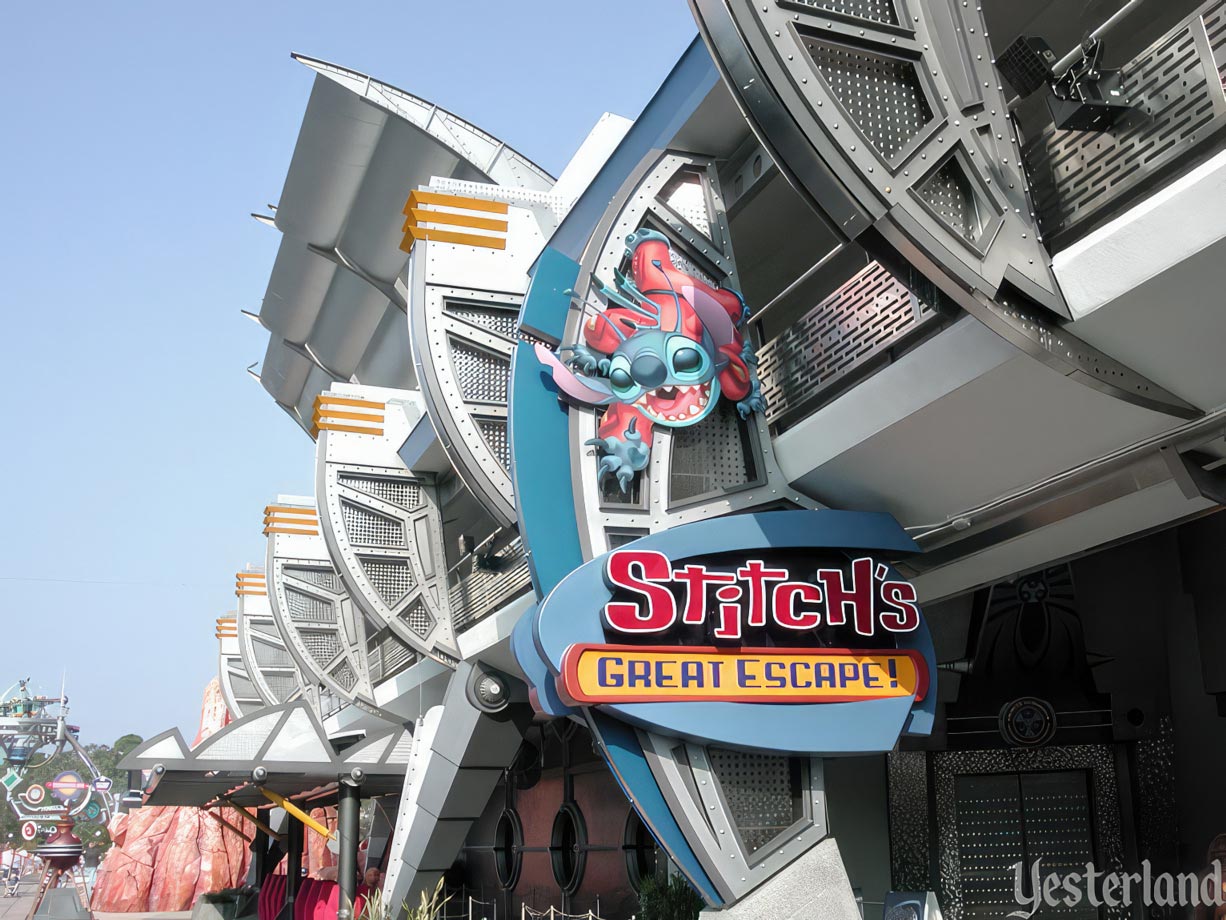
Photo by Werner Weiss, 2004 Stitch’s Great Escape! at Magic Kingdom Park |
|||
|
Twenty years later, in 1995, The ExtraTERRORestrial Alien Encounter, an intense, fear-inducing attraction, replaced Mission to Mars. Stitch’s Great Escape! starring the less-menacing alien from Disney’s Lilo & Stitch (2002), replaced Alien Encounter in 2004. Now the theaters are unused. The pre-shows changed; the main shows changed; and the decor changed. But these attractions all used the same infrastructure with a single stand-up pre-show area that led to two round theaters with concentric circles of tiered seating. |
|||
|
|
Click here to post comments at MiceChat about this article.
© 2024 Werner Weiss — Disclaimers, Copyright, and Trademarks Updated June 21, 2024 |
||
